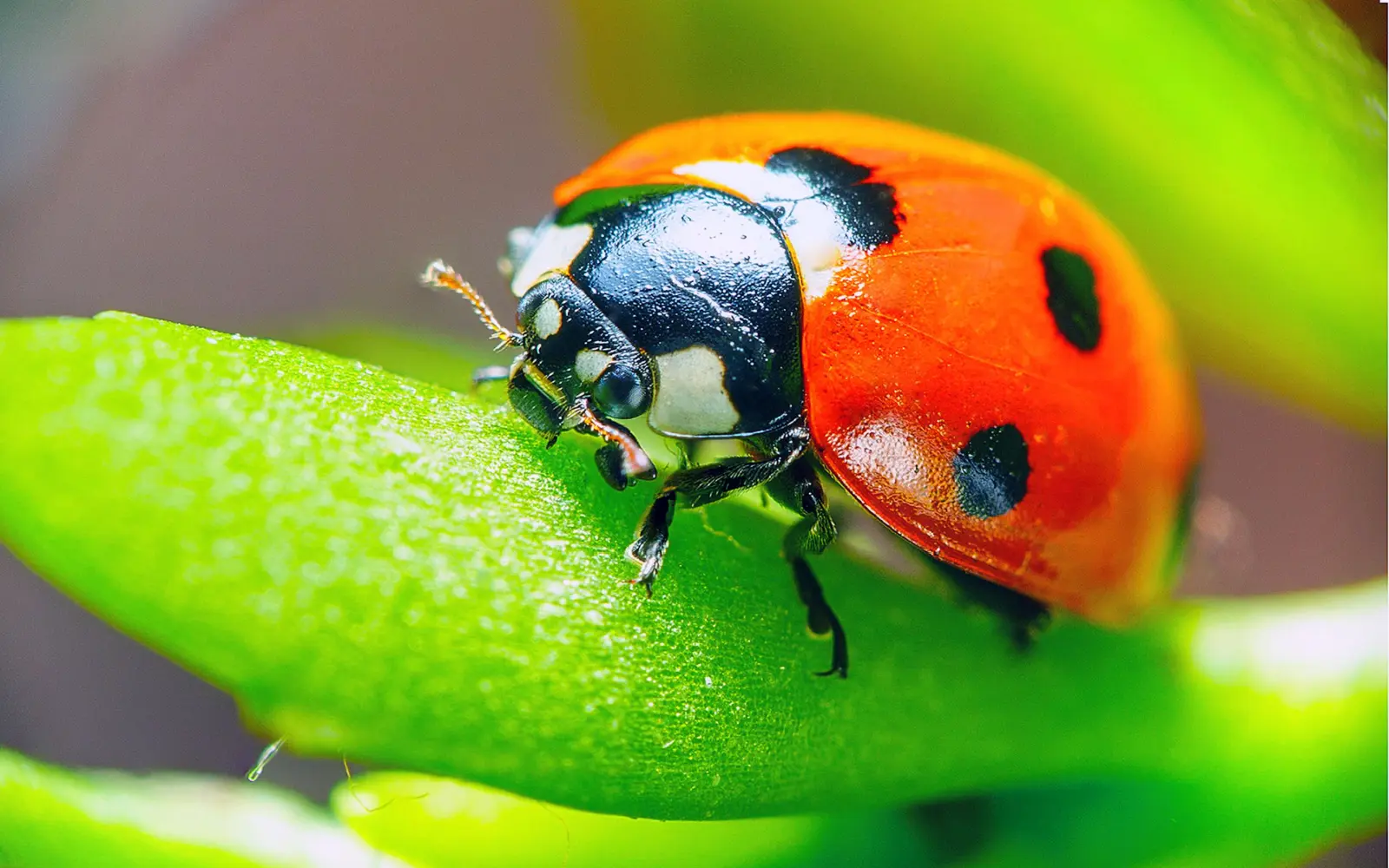Ladybugs, ladybirds, and ladybird beetles, scientifically known as Coccinellidae Septempunctata, were first sighted 9,000 years ago when aphids demolished European farmers’ crops.
Legend has it that European farmers prayed to Virgin Mary to save them from the pests destroying their crops, and the Virgin Mary sent ladybugs as the solution. Since then, ladybugs have been seen worldwide, mostly in temperate regions.
Today, there are over 5,000 types of ladybugs, the most popular being the seven-spotted ladybug, primarily found in North America. Contrary to belief, not all ladybugs have spots; some have stripes or are just plain.
The colors of a ladybird range from red, orange, yellow, and blue and change as they mature. Think that’s wild? Then keep reading. We’ll cover the nine most common types of ladybugs and where you’ll likely see each one.
The 9 Most Popular Types of Ladybugs
Coccinellidae comes from the Latin word coccinellids, which means “scarlet.” These small, hard-shelled, spotted creatures are essential to farmers worldwide as they feed on many pests, such as the aphid.
Other meals include soft-bodied insects and mites, but on average, a ladybug will eat about 50 aphids a day, consuming up to 5,000 in its lifetime.
Although many people believe ladybugs can be a nuisance and a pest to certain plants, they are essential to crops worldwide as they feed on crop-eating insects and their larvae or eggs. However, there are fewer ladybugs each year due to climate change and habitat loss.
As the temperature changes, ladybugs die of dehydration from overheating, as they are susceptible to heat and weather changes. And out of the 5,000+ species of ladybird beetles, nine are the most common.
1. Two Spotted Ladybugs
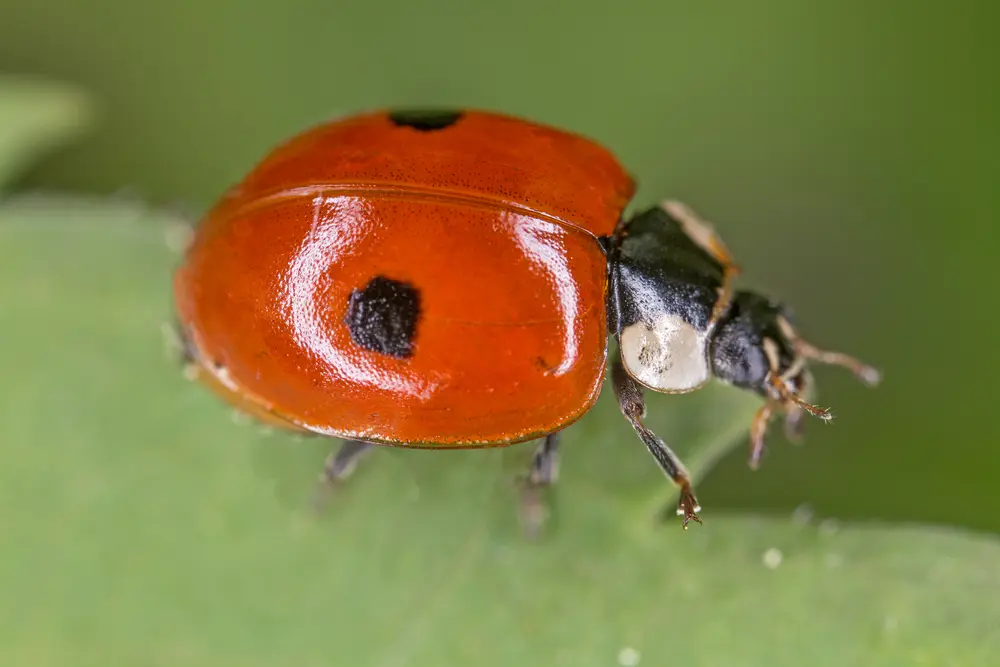
Ihor Hvozdetskyi/Shutterstock
The two-spotted ladybug, known as the Adalia Bipunctata, matures at 4-6mm long and is often seen with a yellowish-red color with only one black spot on either side of its body.
The two-spotted ladybird is famous in the western regions of North America and Central Europe. The two-spotted ladybug’s habitat is grasslands, farmlands, and coastal and woodland regions.
Although they hibernate during the colder months, they are the most commonly sighted ladybug found indoors in the UK. Females can lay up to 40 eggs and live about three years, yet it only takes about ten days to mature.
2. Seven Spotted Ladybugs
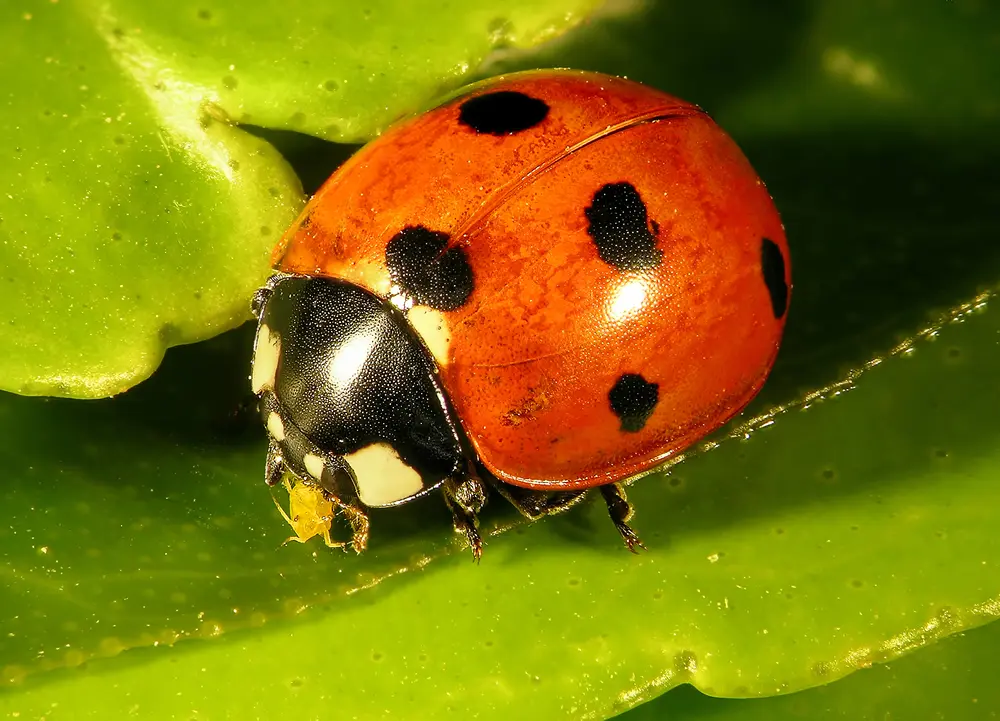
Protasov AN/Shutterstock
Commonly found in Germany, the seven-spotted ladybug has three spots on both sides of its wings, making the seventh spot at the middle, top edge of the wings.
The seven-spotted ladybug has a similar appearance but is slightly different in how big, round, or spaced the spots are.
Although the seven-spotted lady beetle is native to Germany, you can find them worldwide in grassy areas, including marshes, vegetation, gardens, and woodlands.
The seven-spotted ladybird is one of the larger species, ranging from 7 to 10mm long, and has a lifespan of up to 5 years.
3. Thirteen Spotted Ladybugs
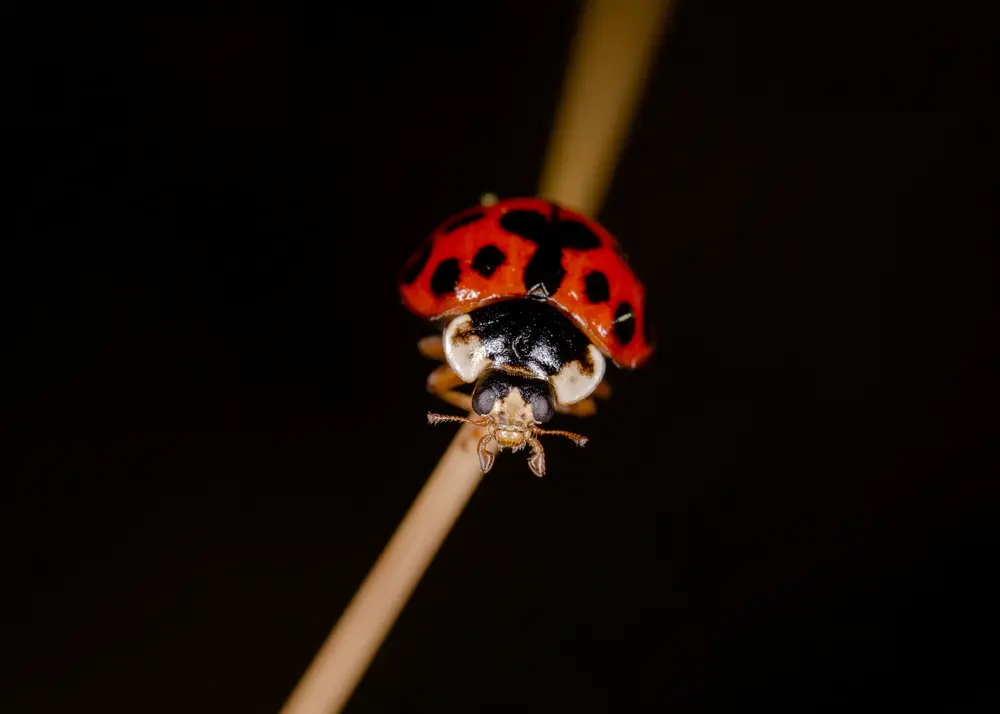
Ihor Hvozdetskyi/Shutterstock
The scientific name for the thirteen-spotted lady beetle is Hippodamia tredecimpunctata, which inhabits most of the northern hemisphere, including Europe, North Africa, Siberia, and Middle Asia, among other countries.
As stated, the thirteen-spotted beetle gets its name from the spotted wings of six black dots on both sides of its wings and one black spot by its head.
You can find the thirteen-spotted ladybird alongside rivers, lakesides, and wet marshy areas such as wet meadows and flooded plains. They were last seen in 1985 and range from red to yellow or brown.
4. Asian Ladybug
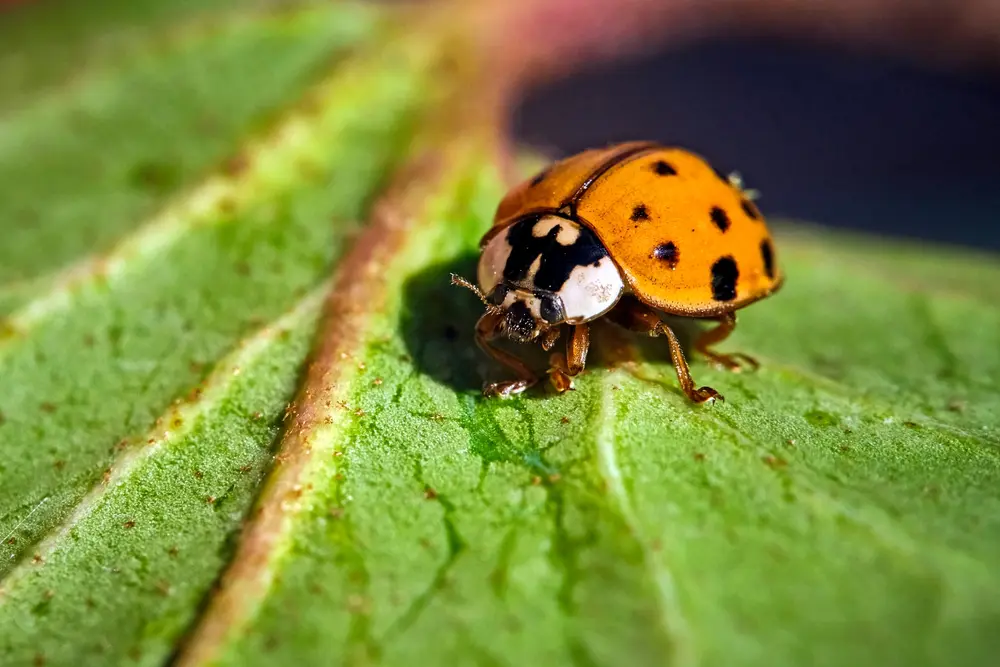
Bildagentur Zoonar GmbH/Shutterstock
Another larger species of the Coccinellidae family, the Asian ladybug (Harmonia axyridis), grows 8mm upon maturity. Asian lady beetles appear orange, red, or yellow with various spots alongside their wings.
One characteristic that makes the Asian ladybird stand out is the representation of a white M behind its head.
Although many ladybugs benefit Earth and farmers’ crops, the Asian ladybird can become a problem in many parts of the world due to their gathering habits.
During winter, Asian ladybugs will swarm together and find the closest heat source for hibernation through the winter, which may become the interior of your home. Asian ladybugs are one of the Coccinellidae species that may bite if they feel threatened.
If you kill them, they ooze red blood from the joints in their legs. Asian ladybugs are native to Asia, China, Korea, and Japan, though you can find them in parts of Canada and the US.
5. Pink-Spotted Ladybug
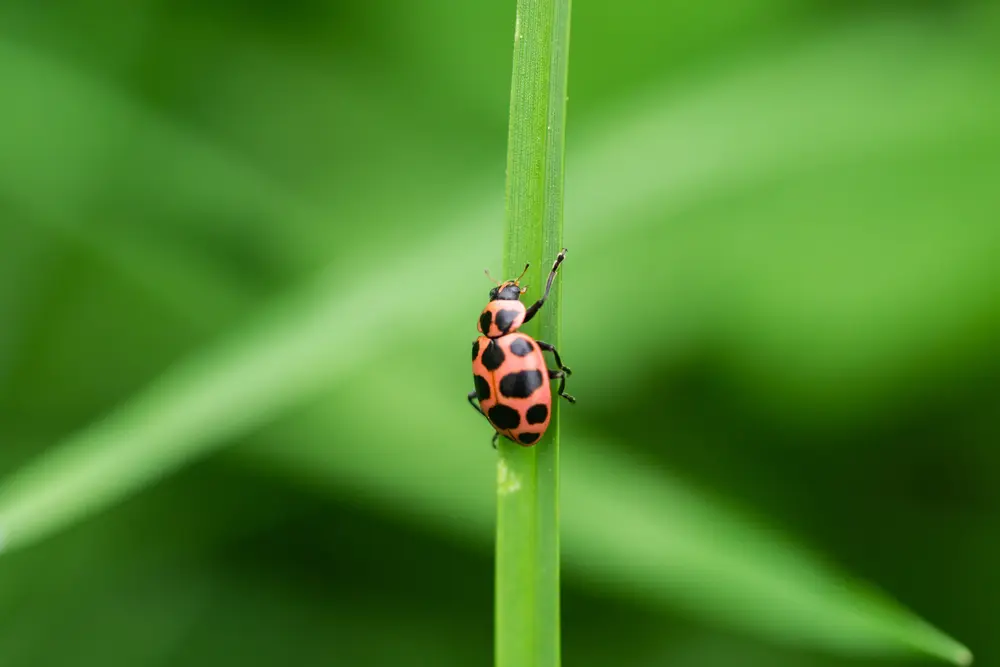
Erik Agar/Shutterstock
The Coleomegilla Maculata, the pink-spotted ladybug, makes the Coccinellidae Septempunctata species unique as you can find it around and on flowers as half its diet comes from pollen.
Like others of its kind, the other half of its diet consists of garden pests such as aphids, potato beetles, and cabbage worms.
Unlike its kind, entomologists divide the pink-spotted ladybug’s body into three segments: head, pronotum, and abdomen.
Still only maturing to 6mm long, the pink spot has a pattern of black spots on top of its pink or yellow body: rows of 3 spots, and 2, then three spots, and again 2.
You can find this common lady beetle throughout North America and most of the US, Canada, parts of New England, and many southern states.
6. The Convergent Ladybug
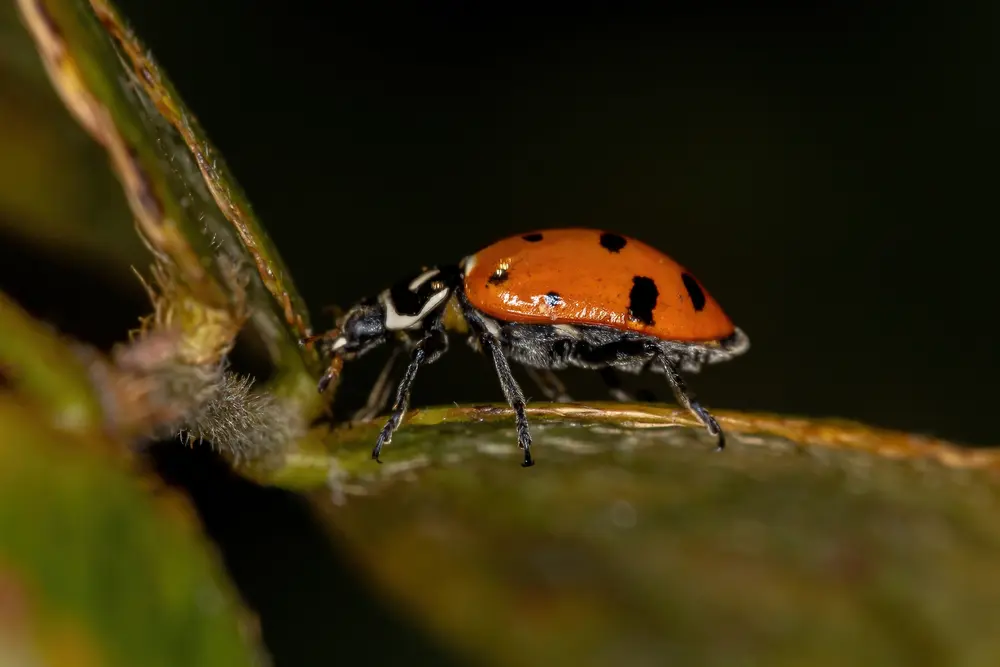
Vinicus R. Souza/Shutterstock
Scientifically known as the Hippodamia convergens, the convergent lady beetle matures at 7.5mm long for females and smaller for males, ranging up to 5mm long.
Like the Asian ladybird, you can find the convergent ladybug in large groups, though they are not as invasive as their cousin.
Like the thirteen-spotted ladybug, its convergent appearance ranges from vibrant red to pale yellow and sometimes brown.
Their black spots consist of thirteen. The most distinguishing feature of the convergent ladybug is a white border with two white converging lines below its head.
Convergent ladybugs are commonly present in much of Western Canada and Mexico. In the US, you can see them in California and New Jersey, where they prey on aphids and other soft-bodied pests.
7. Blue Ladybug
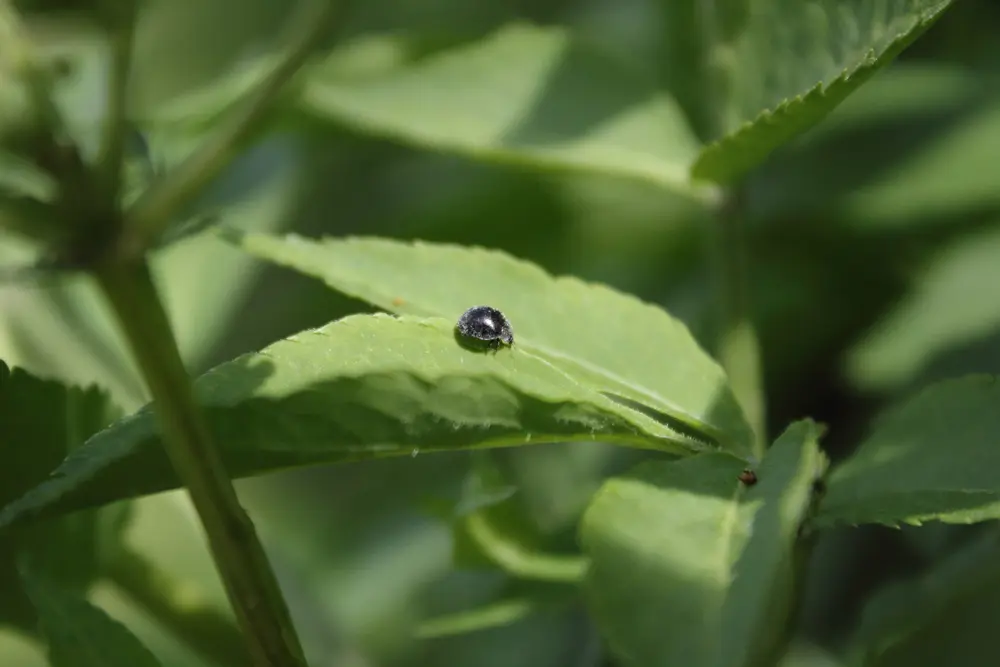
Idris Van Nuffel/Shutterstock
The Halmus Chalybeus is unique to its species as its primary color is blue, steel blue, or metallic, with translucent sides and legs.
The blue ladybug can be found in parts of Australia and New Zealand, inhabiting orchards, fields, parks, and yards.
Except for the color, the blue ladybug is no different than its cousins, feeding on aphids, plant matter, and hibernating during winter.
The Halmus Chalybeus is not invasive, nor do they become aggressive when touched or found.
8. Yellow Ladybug
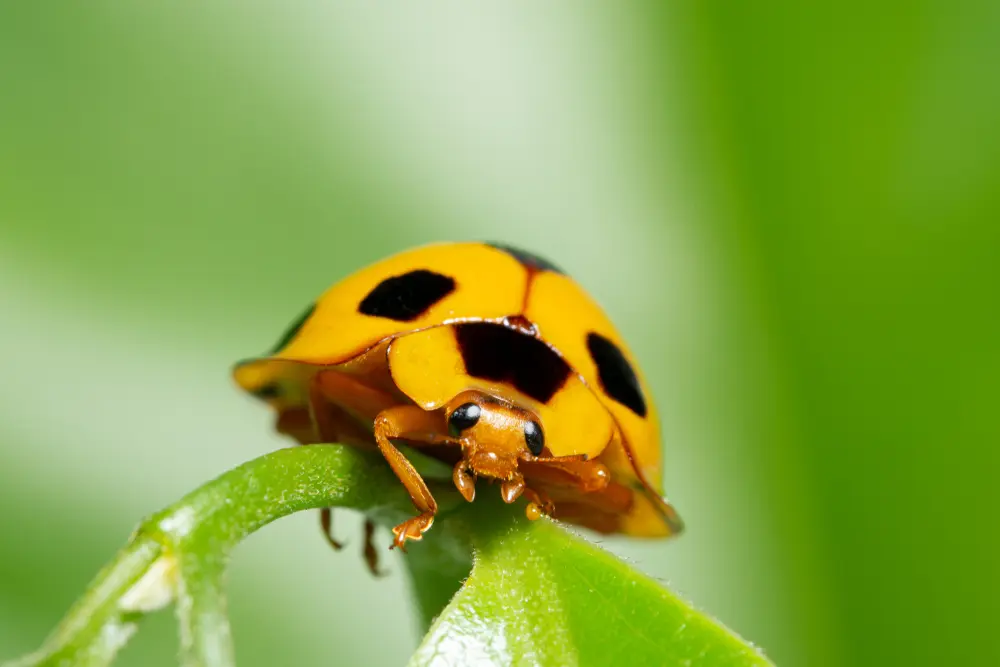
Mr.Aukid Phumsirichat/Shutterstock
You can find yellow ladybirds worldwide. Yellow ladybugs are not their own species but change color to represent their habitat through evolution to protect and defend themselves.
Some yellow ladybug species are:
- Fourteen-spotted ladybug
- Twenty-two-spotted ladybird
- Sixteen-spotted ladybug
- Spotted Cucumber Beetle
Many people believe that yellow ladybugs are poisonous, but this is a myth. Other cultures believe that spotting a yellow ladybug will bring them good luck, love, and fortune.
9. Orange Ladybug
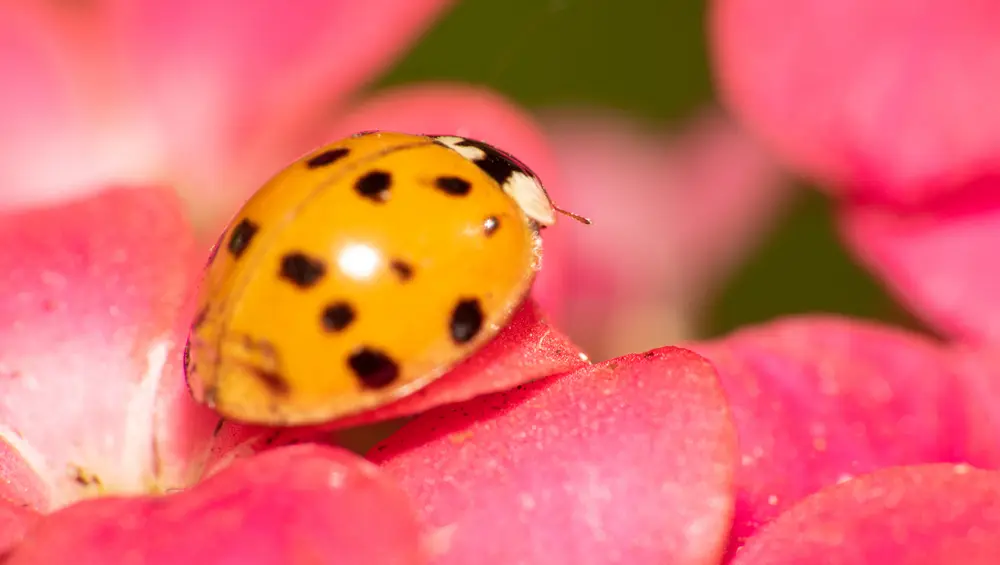
Milton Buzon/Shutterstock
Like the yellow ladybug, an orange ladybeetle has changed color through evolution and diversification.
Strands of DNA have changed to create new colored ladybugs, such as gray, yellow, black, or white. Other than diversification, orange ladybugs can represent old age and toxicity.
It is known that the more vibrant the color of a lady beetle, the fouler its smell is to predators. However, a ladybug is rarely poisonous or toxic to humans.
The types of orange lady beetles are:
- Asian Ladybug
- Seven-spotted ladybug
- Convergent ladybug
- Polished ladybird
- California lady beetle
- Squash ladybug
- Mexican Bean beetle
- Nine-spotted ladybug
In some cultures, seeing an orange ladybird means happiness, joy, and warmth.
Things to Consider About Ladybugs
Ladybugs benefit our environment because they serve as a natural pest control service. Ladybugs consume plant-eating insects like aphids, which destroy crops.
They are so effective at pest control that some farmers even release ladybugs into their fields instead of spraying pesticides. Here are some fantastic and fun facts about ladybugs:
- The last two-spotted ladybug sightings were in 1992.
- Ladybugs excrete a foul-tasting liquid from their legs to deter predators.
- Ladybugs can fly up to 60 km/h, traveling distances of 120km in one flight.
- The smallest ladybird is known as the Zulus Horni, which matures at 1.5mm and is entirely black in appearance.
- The oldest ladybug in history is Phryganistria Chinensis Zhao, which is 62cm long.
- Predators include frogs, wasps, dragonflies, and spiders.
- A ladybug’s leg joints are poisonous to most predators and animals.
Frequently Asked Questions
Still have questions about Coccinellidae Septempunctata? Some of the main questions people ask are as follows:
What are the three most common ladybug colors?
The most common ladybug is the seven-spotted ladybug found in parts of North America, whose primary color is orange. The three most common ladybug colors are red, yellow, and orange. However, due to diversification and evolution, ladybug colors can also become gray, white, black, blue, and pink.
What is the rarest ladybug on Earth?
The headless ladybug is the rarest ladybeetle on Earth. Despite its name, the headless ladybug is not actually headless. It got its name because the headless beetle can hide its head inside a thorax tube, making it impossible to see its head. At maturity, the headless beetle reaches 1 mm in length and resides in a small part of Australia.
How many ladybugs are there?
There are nearly 6,000 species of Coccinellidae Septempunctata worldwide and 500 living in North America. However, you can find ladybugs across the globe in many countries and states. Although most ladybugs are red or orange with multiple black spots, not all species have markings, as some are plain in color.
Which ladybugs are poisonous?
Ladybugs are not poisonous to humans. Though orange ladybugs, such as the Asian lady beetle, excretes the most poisonous toxin from their leg joints, mild allergic reactions can be the worst that can happen to a human.
What is the most common ladybug?
The most common ladybug is the seven-spotted ladybug. It is not known the exact population of the seven-spotted lady beetle. However, they are widespread through western parts of Canada and many areas in North America. Seven-spotted ladybirds are mainly found in wetter regions, though they usually harvest pests found in crops and fields.
So, What Are the Most Popular Ladybugs?
Brought to the world over 9,000 years ago, farmers prayed to the Virgin Mary to bring forth a natural pest control species that would help them grow crops without disaster.
Along came the ladybug known as the Coccinellidae Septempunctata species, and nearly 6,000 different types help the world with vegetation and agricultural health.
The most common ladybugs are the two-spotted, seven-spotted, thirteen-spotted, Asian, pink-spotted, convergent, blue, yellow, and orange ladybugs.
It’s safe to say that without the ladybug, crops, vegetation, and our way of life would change dramatically.
Although some ladybugs, like the seven-spotted, the thirteen-spotted, and the Asian ladybird, are plentiful, some ladybugs face endangerment.

